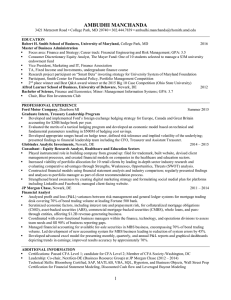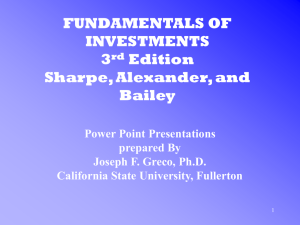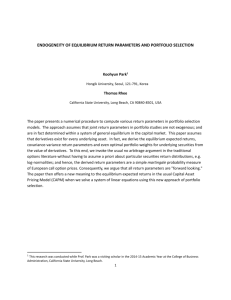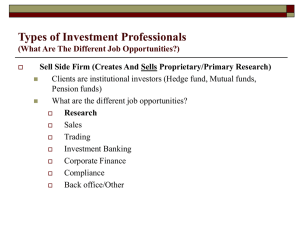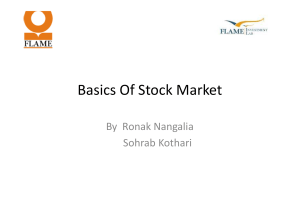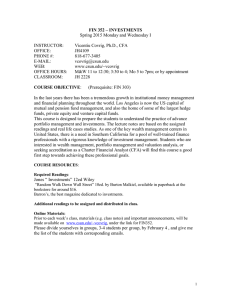What are Stock Options?
advertisement
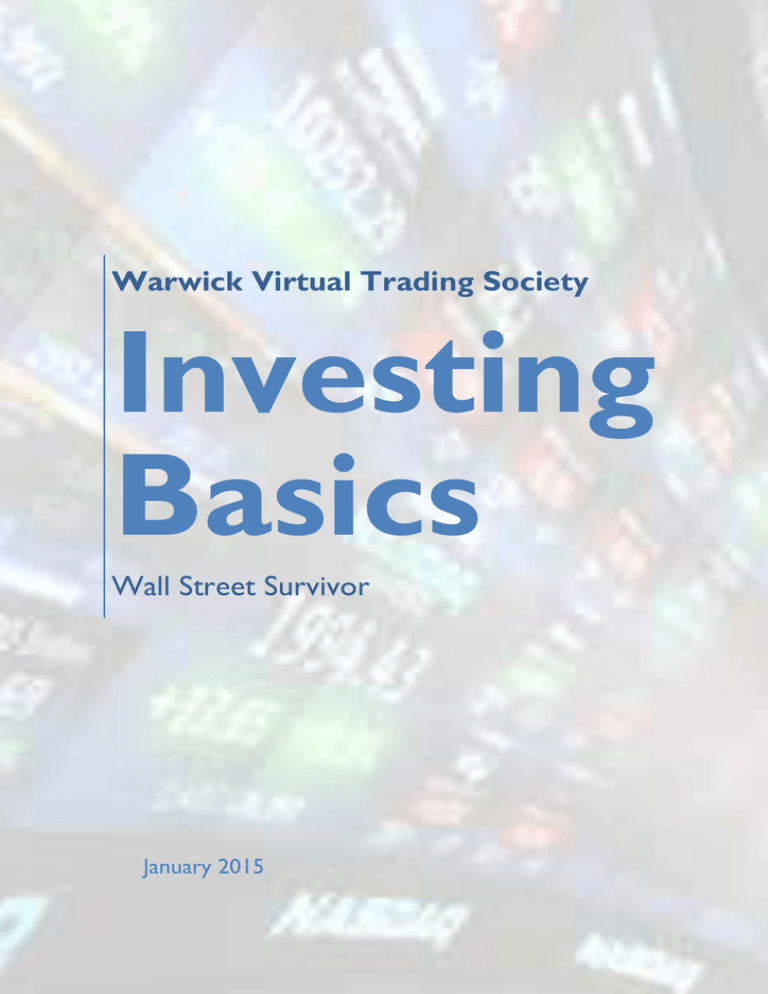
Warwick Virtual Trading Society Investing Basics Wall Street Survivor January 2015 Investment strategies Active vs passive: There are two main ways to invest; actively (picking your own securities) or passively (letting your holdings follow an index). Investing vs speculating: Here at Warwick Virtual Trading society we warn against speculation. Speculation is choosing to invest based on limited information. Speculation is also a short term strategy which may prove difficult to continue in the long run. What are Stock Options? A stock option is a contract between two parties in which the stock option buyer (holder) purchases the right (but not the obligation) to buy/sell shares of an underlying stock at a predetermined price from/to the option seller (writer) within a fixed period of time. There are two types of Option Class: 1. Call option confirms buyer the right to buy 2. Put option gives him the right to sell Strike Price is the price at which the underlying asset is to be bought or sold when the option is exercised. In exchange for the rights conferred by the option, the option buyer pays the option seller a Premium for carrying on the risk that comes with the obligation in the form of contracts. Expiration is the date by which your option is no longer valid. User Interface 1) My Home offers a quick look at your Investopedia account as well as providing a location for you to change your profile settings. 2) My Portfolio details a summary of your current portfolio holdings, your stock watch list and your trading history. 3) Trading contains the part of the simulator that you’ll need to input your trade orders and review any outstanding open and failed trades. 4) Ranking shows your current placing for any specific competition. 5) Markets contains tools for researching and selecting the companies you want to trade, such as, a research section, a ticker symbol look up tool and much more. 6) Awards contains various awards that you can earn in exchange for completing simulator activities and/or goals. 7) Games allows you to create, manage, and review the games you’re participating in and also join existing games. Getting Started Create your Account and join our league You will start with $100,000 Make a trade Research about a growing a company and search for the stock The automated calculator will display stock performance i.e. has the stock price increased or decreased Example: AAPL (Apple Inc) per share costs $110.04 If we buy 100 shares the total cost is [(Number of stocks x stock price) + fees] 100 x 110.04 + the brokerage fees. The process is similar for selling your securities. How and when to buy (or sell) a security? Follow the news because securities are impacted in real time by real life events. Having email alerts or downloading application services for the Financial Times or BBC Business will help you decide when best to buy (or sell) a security. A successful portfolio is, in the long run, a diverse portfolio. Different securities perform differently across time. If something goes wrong, diversification ensures your total portfolio will not suffer the impact of a decline in any one security. For a stock, Google is your friend. Research the stock by looking at Bloomberg, Yahoo Finance, or the company website which detail company growth rates. The stronger and more sustained the growth is, the better the stock is to invest in. Macroeconomic data has an influential impact on investing. Look at country growth rates, inflation, and unemployment to determine how general markets are doing. It is much easier to specialize in industries than to pick random stocks. Companies within industries tend to follow similar patterns which are useful when considering investments. Hedge your risk! After making an investment a popular technique is to ‘hedge’ your risk or minimise your exposure to market movements. This can be done by taking a position in another stock or purchasing an option.




